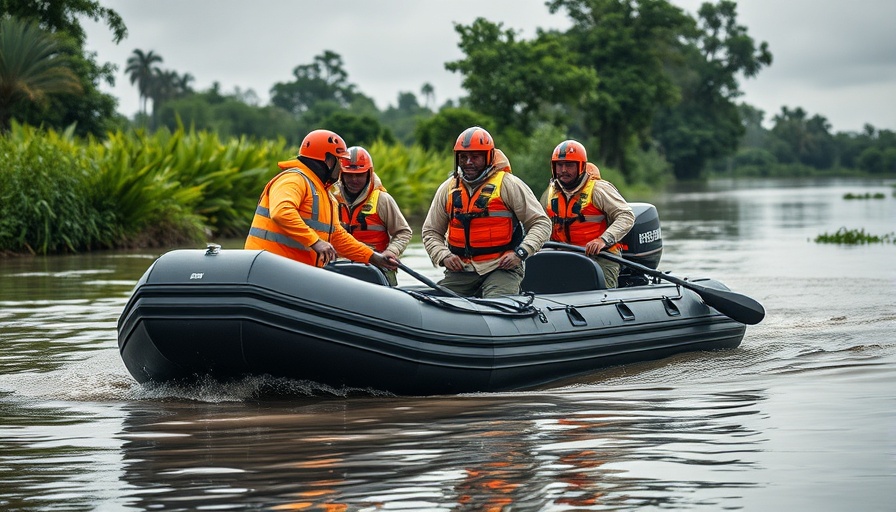
Understanding the Role of the National Weather Service During Texas Floods
The recent tragic flooding in central Texas, which claimed the lives of at least 27 individuals, has sparked a heated debate regarding the effectiveness of the National Weather Service (NWS). As flash floods pummeled the region on July 4, where a month's worth of rain fell within mere hours, questions about forecasting accuracy have emerged. While some local officials criticized the NWS for failing to adequately predict this disaster, meteorologists argue that the agency performed its job effectively and that the extreme weather was beyond typical forecasting capabilities.
Was the Forecast Sufficient?
The NWS had initially predicted significant rainfall, anticipating storms due to Tropical Storm Barry's moisture-laden remnants. By the week of the flooding, forecasts indicated the potential for heavy downpours, particularly at night. The San Antonio office even projected a maximum of seven inches of rain in isolated areas. However, as the flooding unfolded, emergency management officials, including Texas Division of Emergency Management Chief W. Nim Kidd, expressed that the torrential rain that hit Kerr County was unexpected and far exceeded their forecasts.
The Challenge of Meteorological Predictions
Predicting the severity of thunderstorms is notoriously difficult. Meteorologist Chris Vagasky noted the complexities involved in forecasting how much rain will fall during such intense weather events. While the NWS did issue warnings about heavy rain, the rapid intensity of the storm caught many off guard. Flooding is a common occurrence in the region, which led to an underestimation of the potential severity this time around.
Funding Cuts and Their Impact
Criticism of the NWS has intensified in light of recent budget cuts to the agency. Observers point to these reductions as a root cause of potential inadequacies in forecasting capabilities. Experts underline the necessity of appropriate funding for the NWS to ensure accurate and timely weather warnings. The reliability of meteorological predictions is tied to available resources, and insufficient funding puts lives at risk during extreme weather events.
Community Preparedness and Public Awareness
The recent flood situation highlights the importance of public awareness regarding weather warnings and preparedness. While the NWS did its part in forecasting, community preparedness can make a significant difference during such emergencies. Gene Kelly, the Kerr County judge, noted that residents, accustomed to occasional flooding, lacked awareness of the unprecedented threat posed by this specific storm. Being informed and prepared is vital for survival in such situations.
Looking Ahead: The Future of Weather Forecasting
As climate change continues to influence weather patterns, the challenges facing meteorologists are likely to grow, necessitating robust investment in the NWS. The demand for accurate forecasts is higher than ever, especially as extreme weather becomes more common. Emphasizing preventive measures and improving understanding of weather phenomena will help mitigate risks associated with severe weather events in the future.
 Add Row
Add Row  Add
Add 




Write A Comment